

Qaraouiyine Mosque

The University of Al-Karaouine or Al-Qarawiyyin (Arabic: جامعة
القرويين) (other transliterations of the name include Qarawiyin, Kairouyine,
Kairaouine, Qairawiyin, Qaraouyine, Quaraouiyine, Quarawin, and Qaraouiyn) is a
university located in Fes, Morocco. Founded in 859, the university is one of the
leading spiritual and educational centers of the Muslim world and is considered
the oldest continuously operating institution of higher learning in the world by
the Guinness Book of World Records.
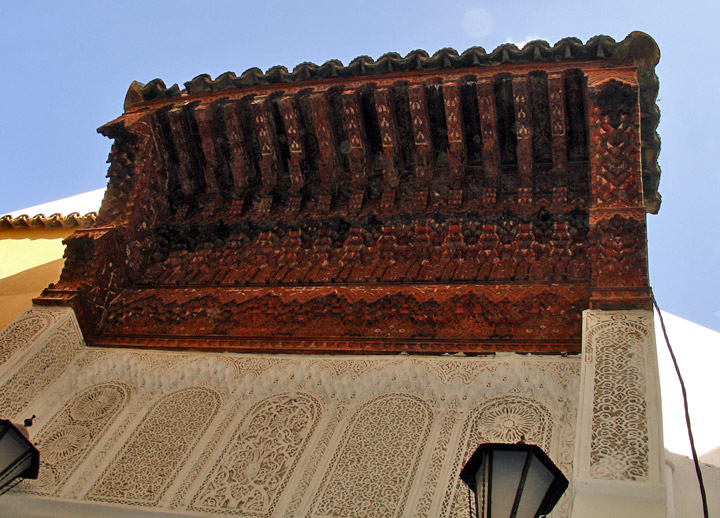
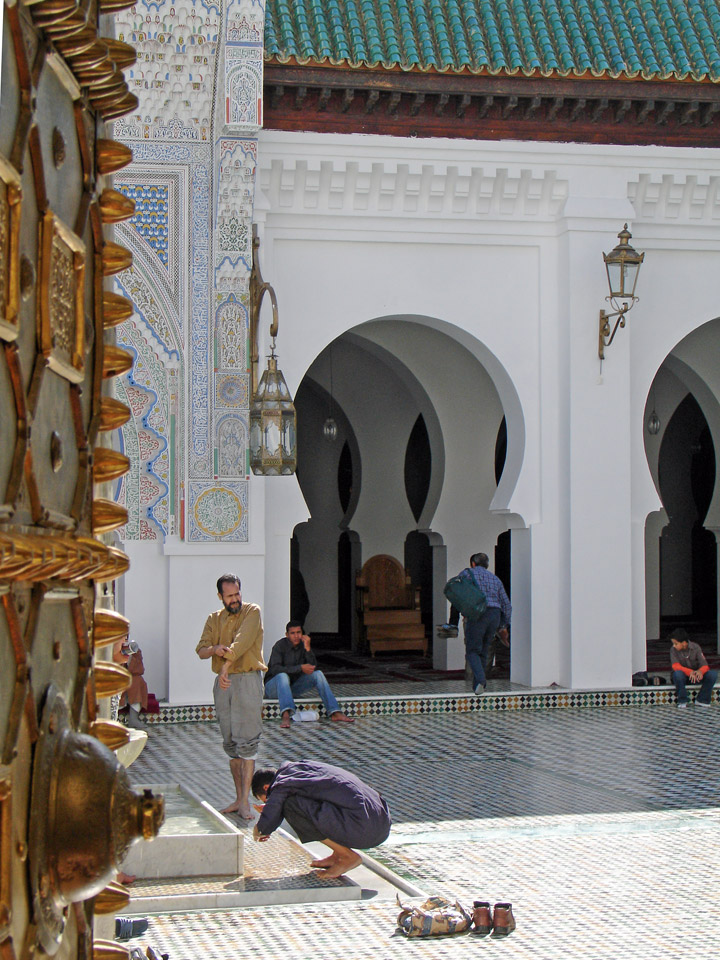
mosque entrance
The university has produced numerous scholars who have strongly influenced the intellectual and academic history of the Muslim world. Among these are Abu Abdullah Al-Sati, Abu Al-Abbas al-Zwawi, Ibn Rashid Al-Sabti (d.721 AH/1321 CE), Ibn Al-Haj Al-Fasi (d.737 AH/1336 CE) Abu Madhab Al-Fasi, a leading theorist of the Maliki school of Islamic jurisprudence and Leo Africanus a renowed traveler and writer.
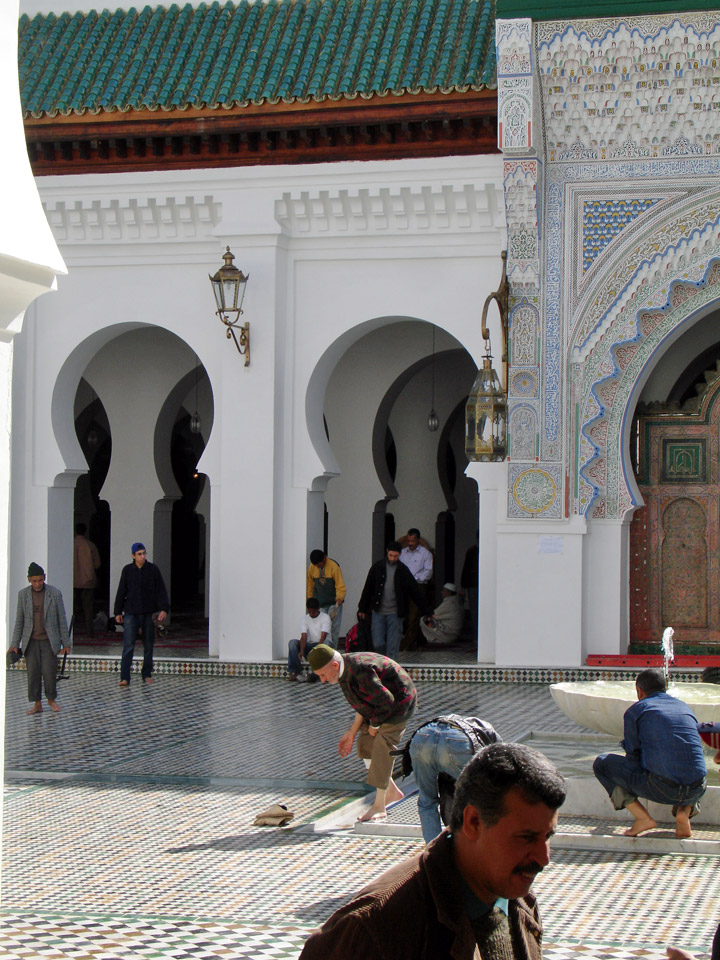
cleansing before prayers
Al Karaouine University played a leading role in cultural and academic relations between the Islamic world and Europe in the middle ages. The greatest non-Muslim alumnus of the university was the Jewish philosopher and theologian Maimonides (1135-1204), who studied under Abdul Arab Ibn Muwashah. The cartographer Mohammed al-Idrisi, whose maps aided European exploration in the Renaissance is said to have lived in Fes for some time, suggesting that he may have worked or studied at Al Karaouine.
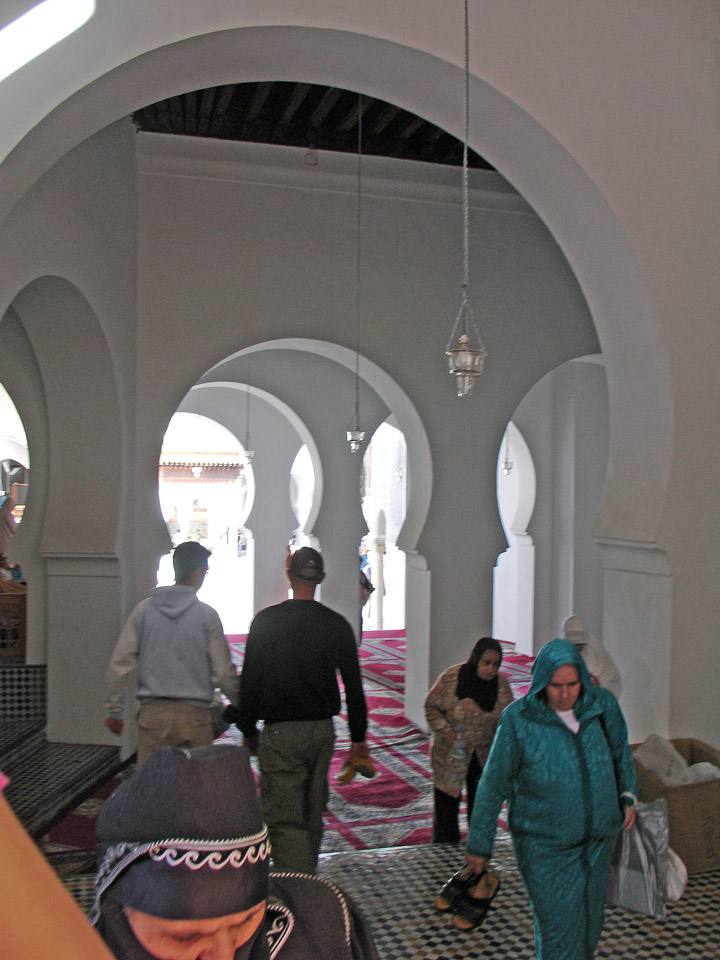
women leaving the mosque
The University of Al-Karaouine is
part of a mosque, founded in 859 by Fatima Al-Fihri, the daughter of a wealthy
merchant named Mohammed Al-Fihri. The Al-Fihri family had migrated from Kairouan
(hence the name of the university), Tunisia to Fes in the early 9th century,
joining a community of other migrants from Kairouan who had settled in a western
district of the city. Fatima and her sister Mariam, both of whom were well
educated, inherited a large amount of money from their father. Fatima vowed to
spend her entire inheritance on the construction of a mosque suitable for her
community.
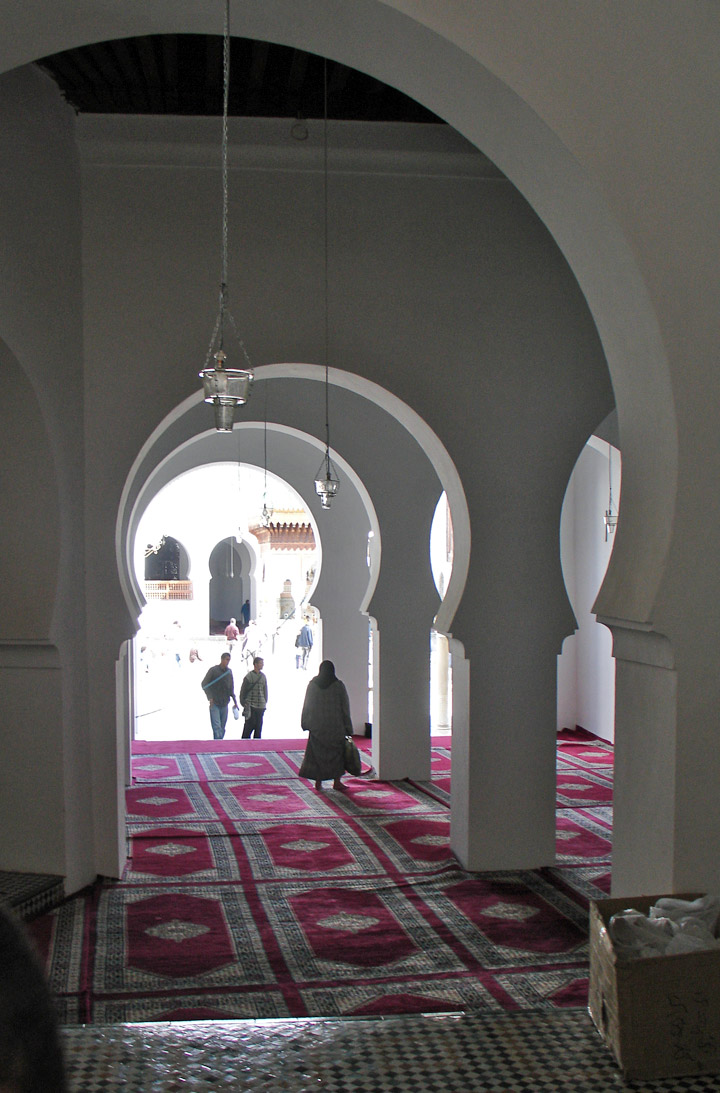
In addition to a place for worship, the mosque soon developed into a place for
religious instruction and political discussion, gradually extending its
education to a broad range of subjects, particularly the natural sciences. In
1957, King Mohammed V introduced math, physics, chemistry and foreign languages.
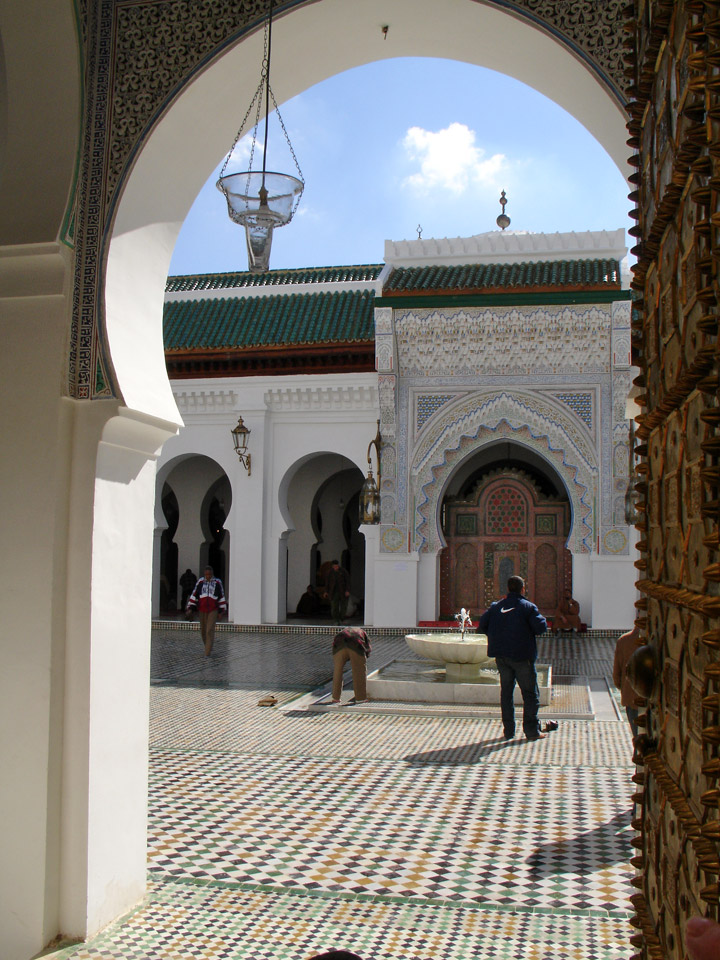
The university gained the patronage of politically powerful sultans. It compiled
a large selection of manuscripts that were kept at a library founded by the
Marinid Sultan Abu Inan Faris in 1349. Among the most precious manuscripts
currently housed in the university library are volumes from the famous Al-Muwatta
of Malik written on gazelle parchment, the Sirat Ibn Ishaq, a copy of the Qur'an
given to the university by Sultan Ahmed Al-Mansur Al-Dhahabi in 1602, and the
original copy of Ibn Khaldun's book Al-'Ibar. Among the subjects taught,
alongside the Qur'an and Fiqh (Islamic jurisprudence), are grammar, rhetoric,
logic, medicine, mathematics, astronomy, chemistry, history, geography and
music.
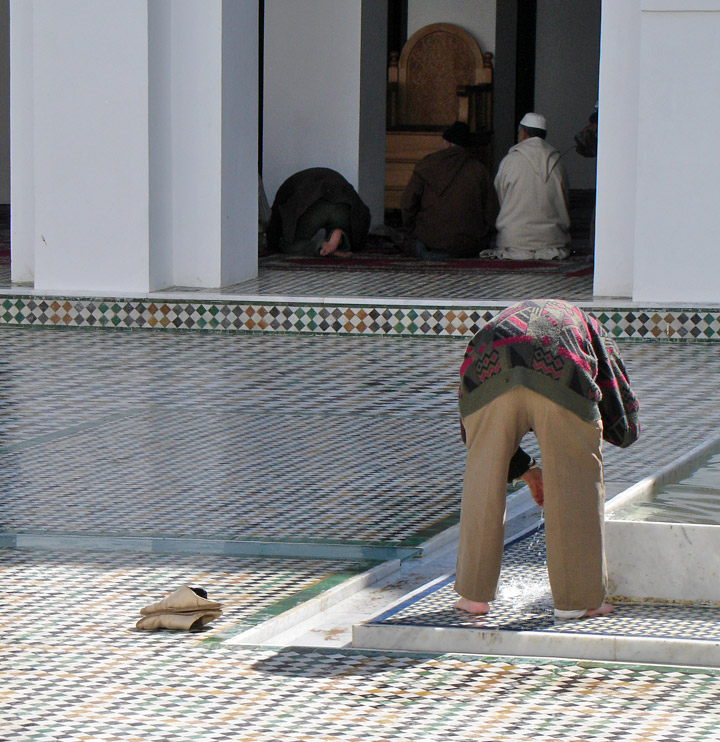
Al-Karaouine played, in medieval times, a leading role in the cultural exchange
and transfer of knowledge between Muslims and Europeans. Pioneer scholars such
as Ibn Maimun (Maimonids, (1135-1204), Al-Idrissi (d.1166 CE), Ibn Al-'Arabi
(1165-1240 CE), Ibn Khaldun (1332-1395 CE), Ibn Al-Khatib, Al-Bitruji (Alpetragius),
Ibn Harazim, and Ibn Wazzan were all connected with the unversity either as
students or lecturere. Among Christian scholars visiting Al-Karaouine were the
Belgian Nichola Louvain and Deutch Golius. History reports on Lyautey, the
French general who led the French "civilising Mission" in Morocco by calling al-Karaouine
"the Dark House".
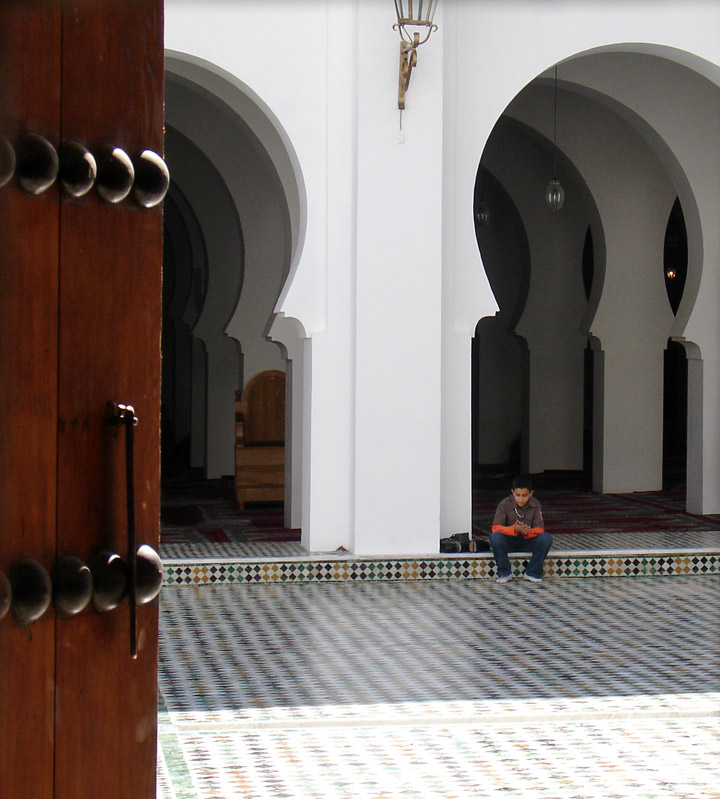
Successive dynasties expanded the Al Karaouine mosque until it became the
largest in North Africa, with a capacity of more than 20,000 worshipers.
Compared with the great mosques of Isfahan or Istanbul, the design is austere.
The columns and arches are plain white; the floors are covered in reed mats, not
lush carpets. Yet the seemingly endless forest of arches creates a sense of
infinite majesty and intimate privacy, while the simplicity of the design
compliments the finely decorated niches, pulpit and outer courtyard, with its
superb tiles, plasterwork, woodcarvings and paintings.
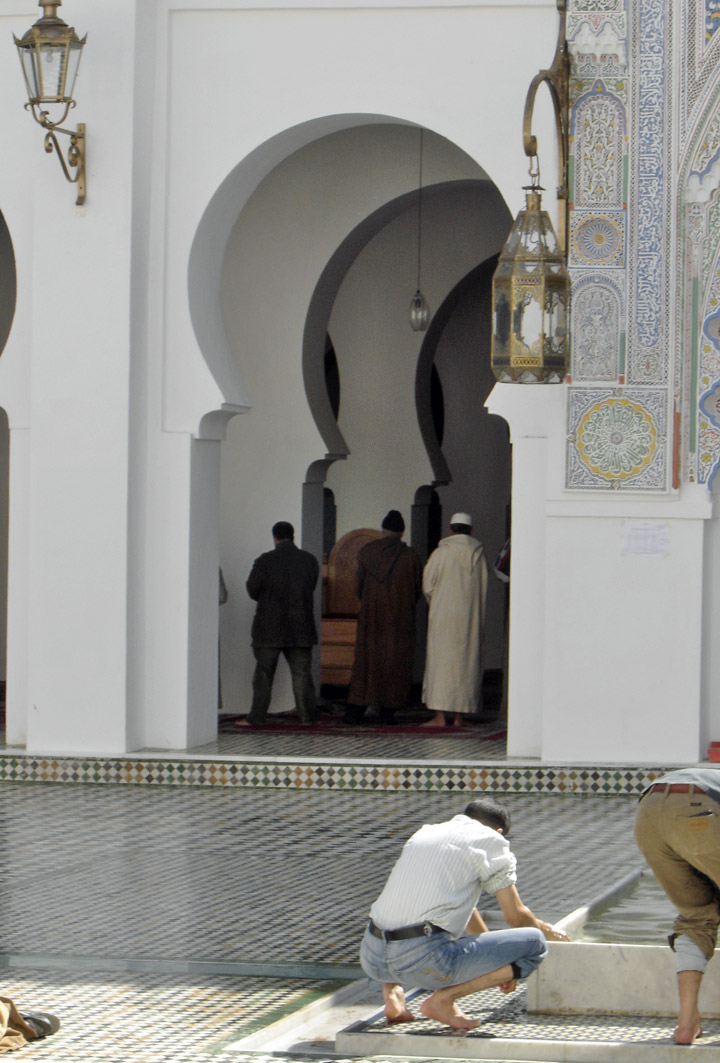
The present form of the mosque is the result of a long historical evolution over
the course of more than 1,000 years. Originally the mosque was about 30 meters
long with a courtyard and four transverse aisles. The first expansion was
undertaken in 956, by Umayyad Caliph of Córdoba, Abd-ar-Rahman III. The prayer
hall was extended and the minaret was relocated, taking on a square form that
served as a model for countless North African minarets. At this time it became a
tradition that other mosques of Fes would make the call to prayer only after
they heard Al Karaouine.
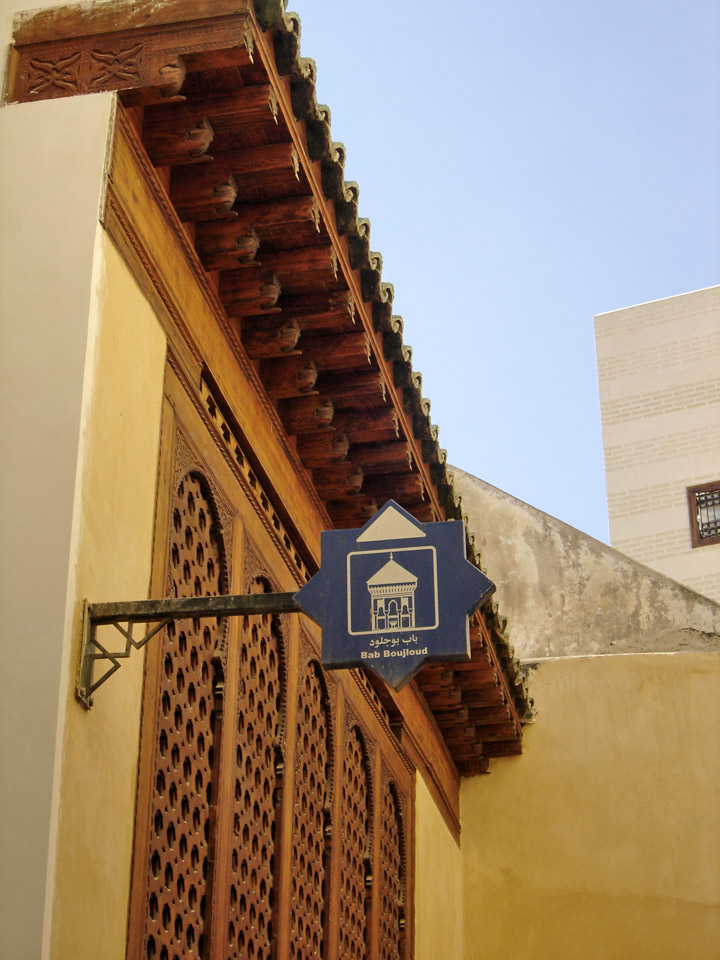
The most extensive reconstruction was carried out in 1135 under the patronage of
the Almoravid ruler sultan Ali Ibn Yusuf who ordered the extension of the mosque
from 18 to 21 aisles, expanding the structure to more than 3,000 square meters.
Some accounts suggest that Ali Ibn Yusuf employed two Andalusian architects who
also built the central aisle of the Great Mosque of Tlemcen, Algeria, in 1136.
The mosque acquired its present, Córdoban appearance at this time, featuring
horseshoe arches and ijmiz frames decorated with beautiful geometrical and
floral Andalusian art, bordered with Kufic calligraphy.
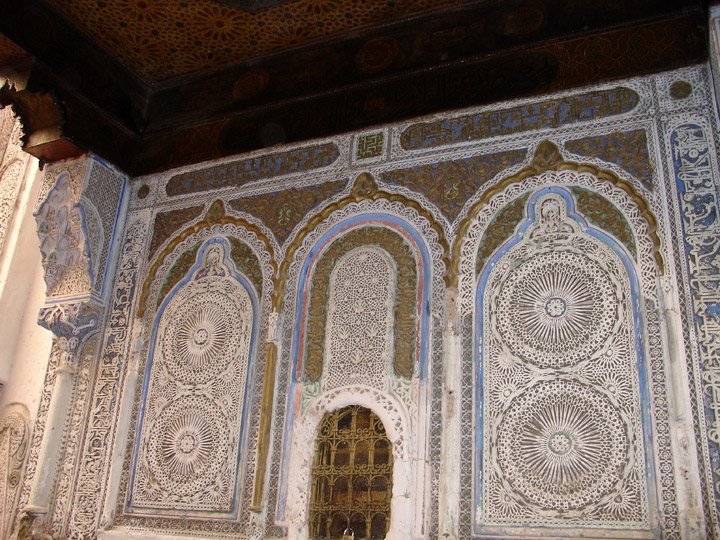
a sanctuary
In the 16th century, the Saadis restored the mosque, adding two patios to the northern and southern ends of the courtyard
Text from Wikipedia

sanctuary door
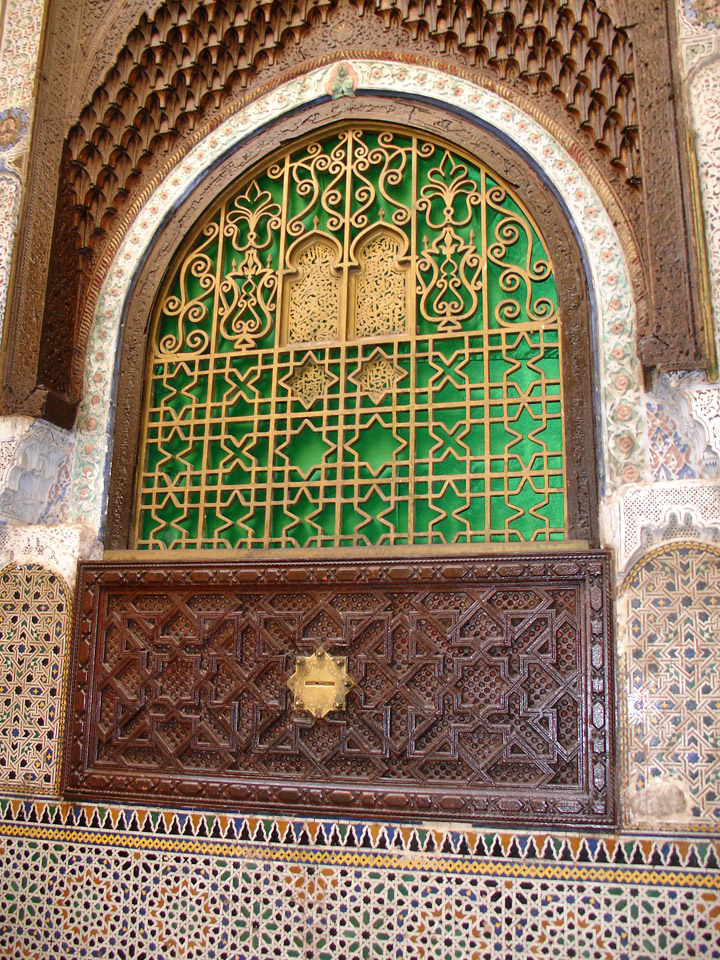
petition slot

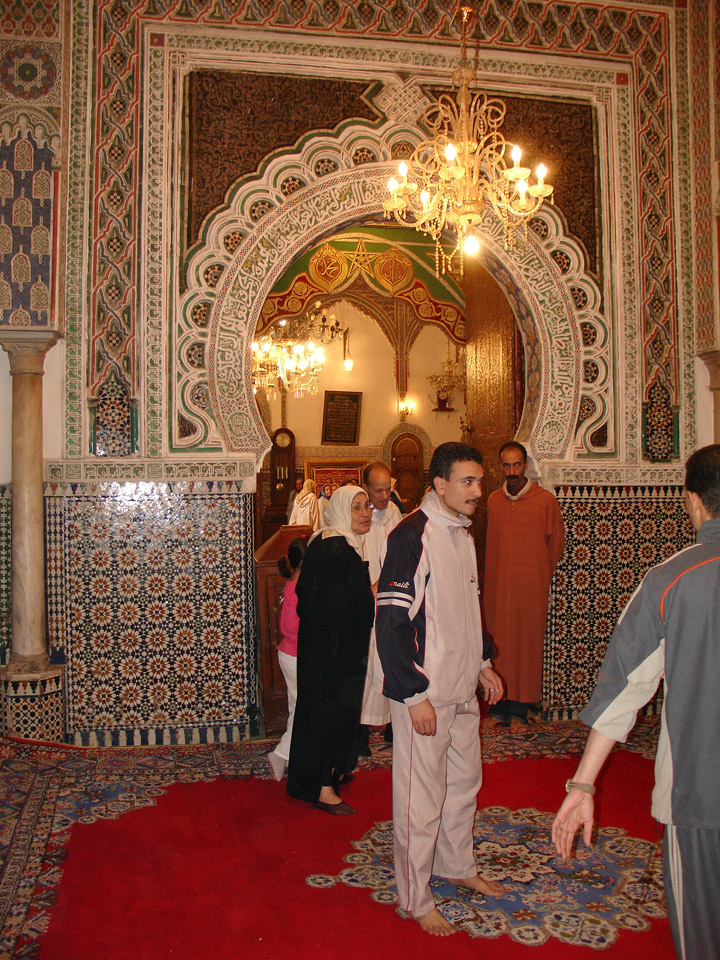
entrance
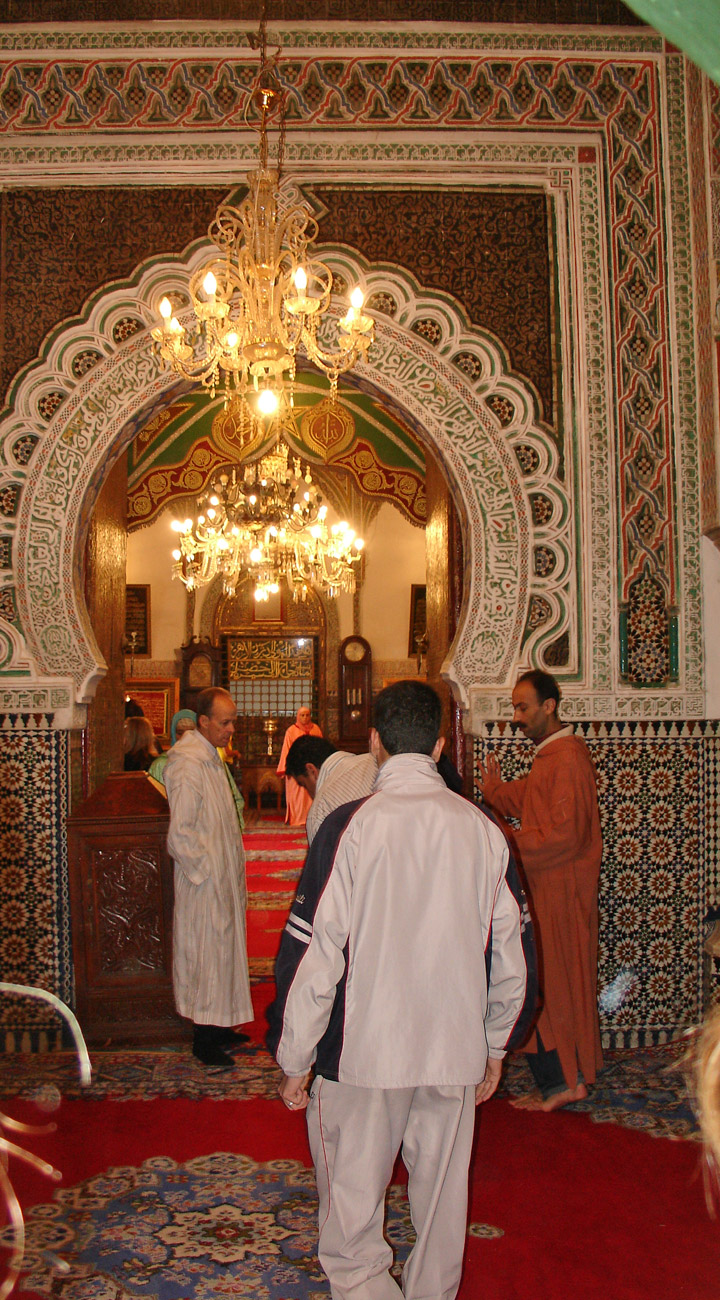
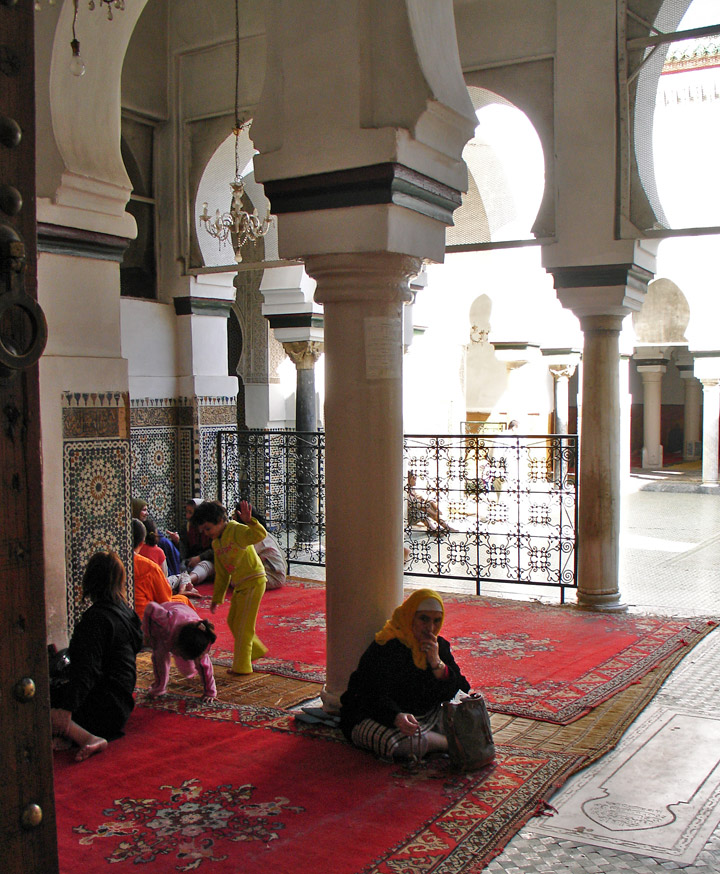
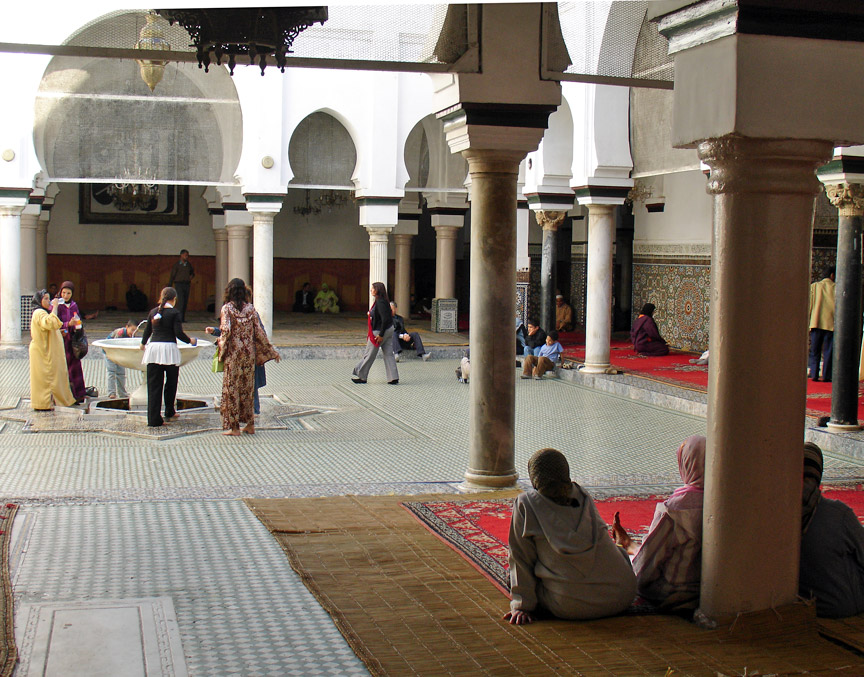
courtyard

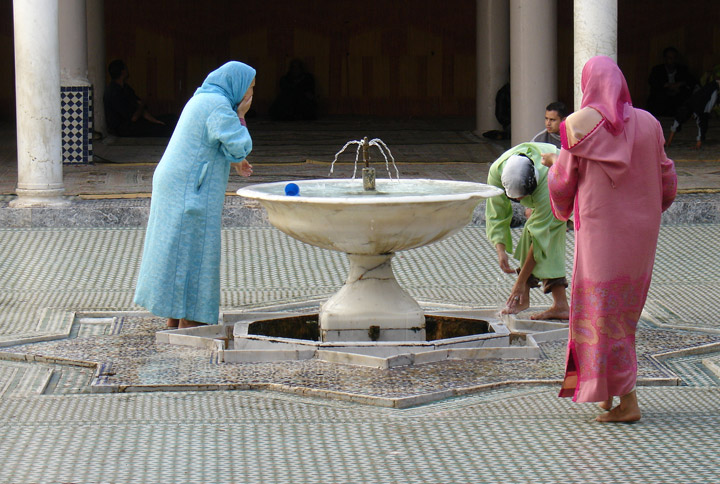
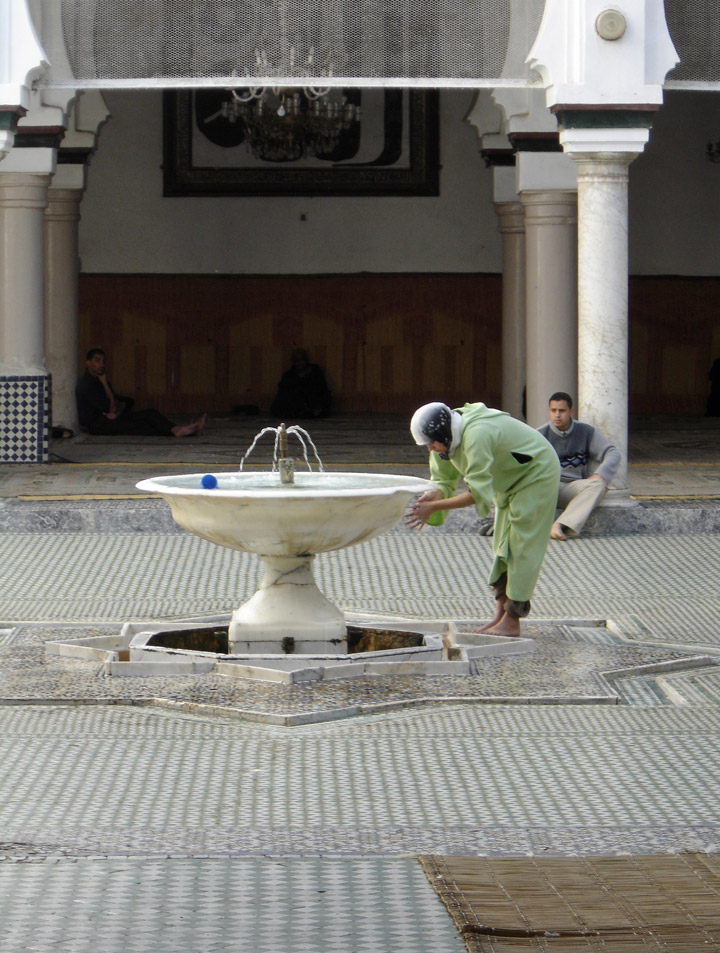
washing before prayers